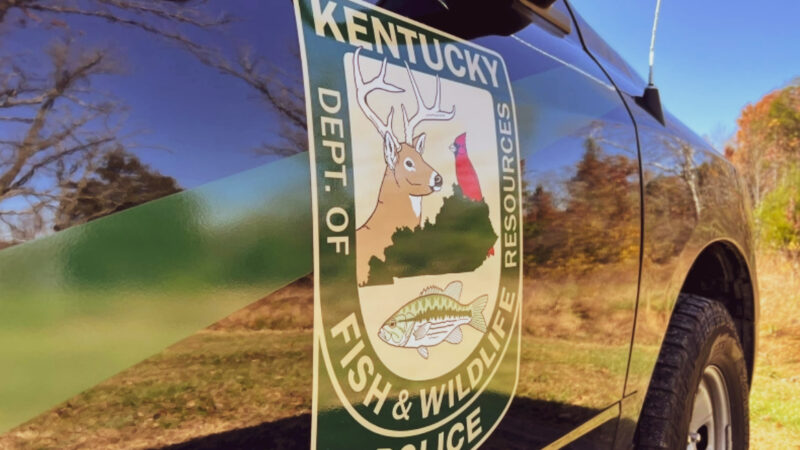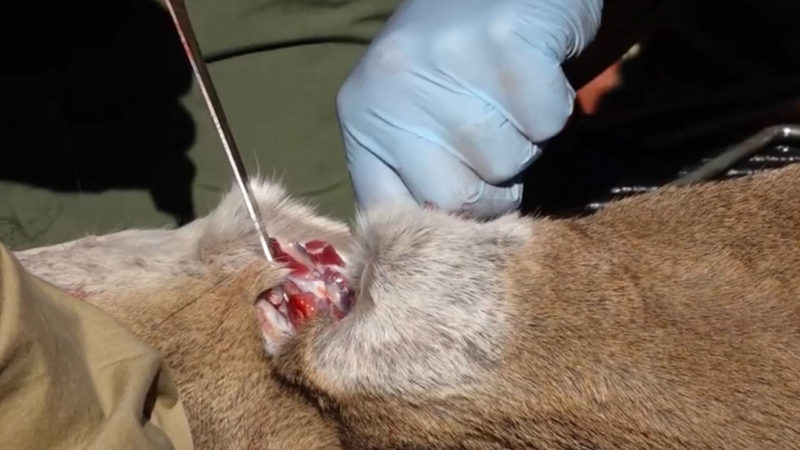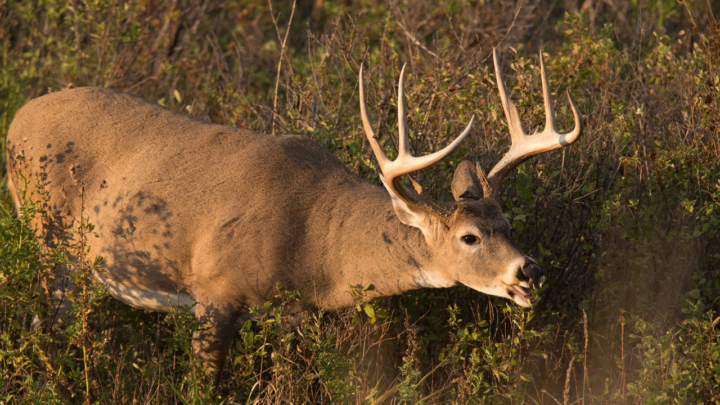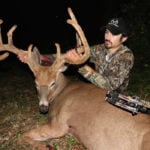The Kentucky Department of Fish and Wildlife Resources (KDFWR) recently filed a lawsuit against a Bluegrass State resident who brought an intact deer head from Wisconsin to Kentucky. While the hunter abided by Wisconsin regulations and legally checked in his 8-point buck, he did not follow Kentucky laws on harvested deer importation.
He brought the head of the buck back to Kentucky for taxidermy purposes. This violates Kentucky law in place to halt importation of high-risk deer parts. In this case, the head still had brain tissue, lymph nodes, and spinal column material. Each of these parts can contain chronic wasting disease (CWD) prions.

The KDFWR filed a civil suit against the hunter and is seeking $1,900 in damages incurred during the investigation, testing, carcass disposal, and more. This was a result of the Louisville-based hunter not following guidelines established to stop CWD-positive deer from entering the Bluegrass State.
He traveled to Wisconsin, killed a deer (that later tested positive for CWD), and brought unlawful deer parts back to Kentucky. In this case, it was the intact head, which still had unpermitted tissues. Upon learning of the incident, KDFWR ordered testing of tissue from the deer head. Two different test types determined the deer had CWD.
“The threat of CWD is getting more and more real every day,” said KDFWR State Wildlife Veterinarian, Dr. Christine Casey. “We’re not talking about a virus, bacteria, or parasite. We’re talking about this weird category of disease—this is a prion. It’s extremely hard to eradicate. It’s very hardy in the environment, meaning it’s almost indestructible.”
Fortunately, according to KDFWR, this carcass was frozen and contained upon inspection. Most likely, CWD prions were not yet exposed to Kentucky environment. Still, the Kentucky resident was charged under 301 KAR 2:095 (https://apps.legislature.ky.gov/law/kar/titles/301/002/095/).
To prevent the spread of CWD, it prohibits hunters from bringing unapproved harvested cervid parts from caribou, deer, elk, moose, and reindeer. Hunters may not bring whole carcasses or high-risk parts, such as brain matter, spinal material, lymph nodes, etc. across state lines.

In contrast, a hunter can import the following to Kentucky:
- Antlers
- Antlers attached to a skull cap with no attached meat or tissue
- A skull with no attached meat or tissue
- Deboned meat, excluding brain matter and other unapproved parts
- Upper canine teeth with no meat matter or tissue
- The hide
- Finished taxidermy products
“We don’t want to discourage hunters from traveling out of state to hunt,” Casey said. “But we want them to do it responsibly. That means quartering and de-boning and not bringing high-risk parts, which are the brain, lymph nodes, spinal column, etc.”
To date, CWD has been discovered in 30 states. This includes every state that borders Kentucky, except Indiana. If Kentucky hunters hope to keep CWD out of Kentucky, out-of-state hunters must follow regulations on harvested deer importation. Fortunately, more than 40,000 Kentucky whitetails have been tested for CWD, and no living Bluegrass State whitetail has tested positive for CWD, wild and captive herds alike.
Even so, in 2021, it was discovered in Tennessee only eight miles from the state border. This prompted an emergency response, which formed the current CWD surveillance zone (https://fw.ky.gov/Wildlife/Pages/CWD-SurveillanceZone.aspx). This area consists of five counties in southwestern Kentucky, including Calloway, Fulton, Graves, Hickman, and Marshall. According to the KDFWR (https://fw.ky.gov/Hunt/Documents/huntingguideentire.pdf), this area has a ban on baiting and feeding of deer, mandatory CWD check stations for some season dates, and no transportation of harvested deer out of the CWD surveillance zone.
The latter includes whole deer carcasses and high-risk parts (including intact heads or parts containing brain material). Only de-boned meat, antlers, clean skull caps, clean skulls, clean teeth, clean hides, and finished taxidermy projects are permitted to leave the CWD surveillance zone.

“There are some regulations we put in place,” Casey said. “Part of that plan was baiting restrictions. And then part of it was carcass movement restrictions.”
While all hunters within the CWD surveillance zone are required to have their deer tested during certain dates, all Kentucky hunters can have their deer tested. “We have a freezer drop-off program,” Casey said. “It is free for hunters. All you need to do is chop off the head, put it in a freezer, fill out some information, your contact information, and submit it for testing. Then, go online and look up the results.”
About CWD
CWD was discovered in 1967 in a Colorado State facility that housed scrapie-positive sheep and deer in the same location. Scrapie is the equivalent of CWD in the sheep species. It’s believed to have jumped the species barrier from sheep to deer to become CWD.
Of course, it is an always-fatal disease in the nervous system. It’s common in elk, moose, mule deer, reindeer, and whitetails. It’s transferred via saliva, feces, (potentially) urine, blood, and other excretions and carcass parts. It can even be ingested if on vegetation and consumed or be up-taken through the soil by vegetation, then consumed by a cervid, and contracted.
Scientifically speaking, it is among a group of prions called transmissible spongiform encephalopathies. Thus, perhaps an unfamiliar concept to some, CWD is neither bacteria nor a virus. It is not a living organism. Rather, it is a prion, or misfolded protein. It’s very similar to mad cow disease in cattle, and Creutzfeldt-Jakob Disease (CJD) in humans. (Note, based on current research and understanding, the existence of CJD, and its similarities to CWD abound, that does not in and of itself mean humans can contract CWD.)
Because these are misfolded proteins, they cannot be broken down by the body like normal proteins. The prions become more concentrated and begin to degrade the nervous system. Generally, CWD is a slow killer. Oftentimes, it can take up to two years, sometimes longer, before animals start to show visible symptoms. Unfortunately, there is currently no known cure for CWD. The only tool is spread prevention.
According to the USGS (https://www.usgs.gov/news/featured-story/chronic-wasting-disease-can-science-save-our-dear-deer), it is known to exist in wild cervids in the United States, Canada, South Korea, Norway, Finland, and Sweden. Trusted resources such as the Theodore Roosevelt Conservation Partnership (https://www.trcp.org/chronic-wasting-disease/), among many others, label CWD as the single greatest threat to wild cervids.

 By
By 



